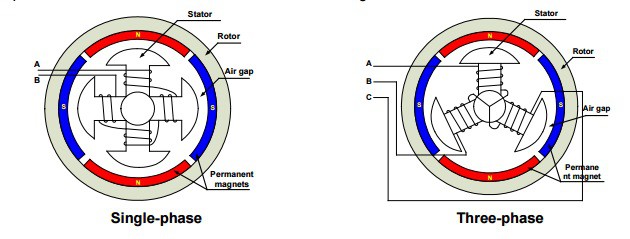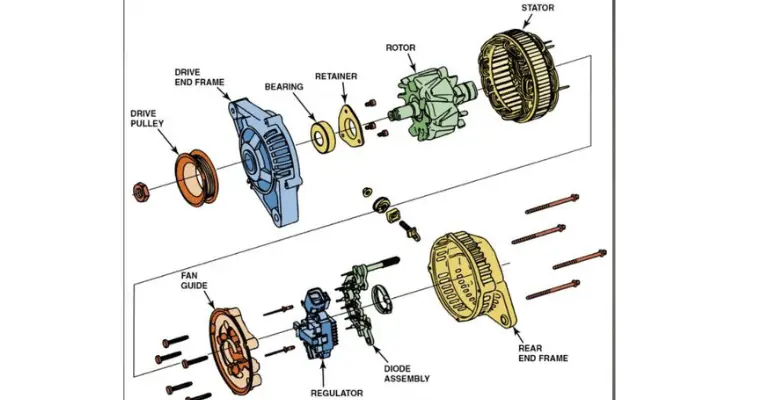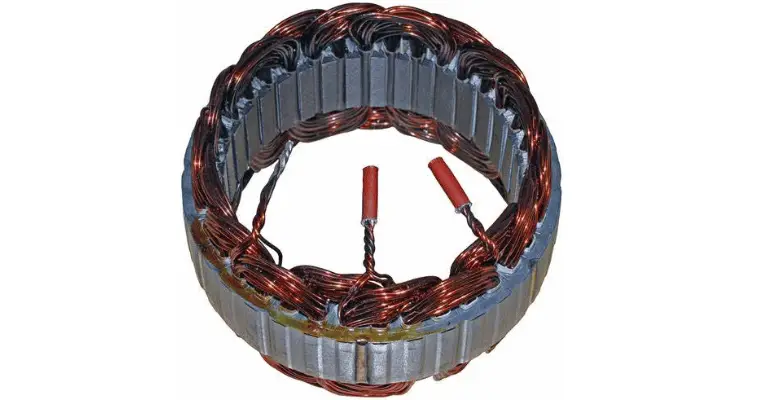We know that an alternator is a component that generates electricity through kinetic energy, powering crucial elements like the headlights, indicators, and the engine itself. But, do motorcycles have alternators?
The quick answer is a resounding yes! However, motorcycle alternators work a touch differently than those in cars, primarily due to their size difference – and they happen to go by different names.
Typically, motorcycle alternators are known as a stator. Stators are significantly smaller and less complex when compared to car alternators, which is why they’re a common choice for motorcycles.
Regardless of your background, understanding the standard motorcycle charging system is a critical part of motorcycle ownership. In this guide, I’ll dive deep into the world of motorcycle alternators and stators, shedding light on their key differences and functions. So keep reading and lets get charged up!
How Does A Motorcycle Charge Its Battery? Do Motorcycles Have Alternators?
The primary function of a motorcycle alternator, or stator, is to power the bike’s electrical components and keep the battery charged. However, you might be wondering exactly how this works.
Once a motorcycle is powered on, the kinetic energy (or motion) from the engine prompts the stator to start working. As the bike runs, the stator generates an electrical current that feeds back to both the battery, ignition system, and other electircal components, restoring the battery’s charge. Essentially the stator will continue to generate electricity to ensure the battery doesn’t run flat, by continuously supplying it with energy.
It’s important to note that a motorcycle cannot function solely on battery power. If it tried, the electrical system would drain the battery quickly, potentially leaving you stranded. The stator plays an indispensable role in keeping the battery running and the bike operational.
What Is A Stator? What Does It Do On A Motorcycle?
At its core, a ‘stator’ is a type of alternator—a mechanism that converts mechanical energy into electrical energy. The term alternator is a broader name for the component that charges a vehicle. Typically they do so by converting mechanical energy (movement) into electrical energy.
Stators, which are simpler and smaller than standard alternators, are a common power source in most bikes. They perform the same function as an alternator but are usually located inside the motorcycle engine, considered an integral part of it.
A stator comprises three fundamental parts: the rotor (or flywheel), the stator itself, and the field coil. The stator generates alternating current (AC) as the rotor, or flywheel, rotates around it while the motorcycle runs. This current is generated through magnetism—spokes arranged around the stator with copper coils create a magnetic field as the flywheel moves around them.
Before this generated power reaches the battery, it passes through a regulator/rectifier to convert it into a type of current the battery can store—direct current (DC). The regulator also makes sure the battery receives the appropriate voltage, preventing it from overcharging. Of course, after this point, the electrical system is then powered by the battery.
Related article: Bad Stator Symptoms
Here’s a video (my personal favorite, they’re hilarious) diving further into these concepts:
[su_youtube_advanced url=”https://www.youtube.com/watch?v=nzH64JSgKuE”]
AC vs DC Current
One key aspect of how a stator works in a motorcycle involves the conversion of AC (alternating current) to DC power (direct current). But what’s the difference between the two?
AC is a type of electrical current where the flow of electricity regularly reverses direction, while DC is a type of current where the electricity flows in a constant direction.
Batteries are incapable of storing AC current, which is why the power generated by the stator must be converted into DC before being delivered to the battery. This conversion is carried out by the rectifier, ensuring the battery receives a type of current it can store and use later in associated electrical components on the bike.
2-Phase vs 3-Phase Stators
Two-phase and three-phase stators are entirely distinct components within a motorcycle’s electrical system, each presenting unique characteristics and trade-offs. The 2-phase stator, simpler in design with fewer coils, is more economical but tends to deliver power less consistently, particularly at low engine speeds, which can impact battery charging and electrical performance. In contrast, the 3-phase stator, with its three coils, provides a more reliable and efficient power output across a wider range of engine speeds, ensuring smoother performance and superior battery charging capabilities.

However, this comes at the cost of increased complexity and potential repair expenses. While the 2-phase stator offers a budget-friendly option, it may compromise on performance, making the 3-phase stator a more dependable and efficient choice for modern and larger motorcycles, despite its higher cost.
Where Is The Stator Located?
The stator of a motorcycle is typically mounted on the left side of the engine crankshaft, opposite the carburetor or air intake. However, the exact location may vary depending on the make and model of the bike. Other common locations include the side or bottom of the engine case, the rear of the engine, or near the gearbox.
It’s crucial to remember that motorcycle alternators (or stators) are part of the engine. So, if you need to work on it, you’ll have to disassemble the engine. This is in contrast to cars, where the alternator is an independent, externally mounted unit that can be serviced without opening up the engine assembly.
Alternator vs Stator Comparison
While both a motorcycle alternator and stator performs the same function—keeping the battery charged and supplying the bike with electricity—there are some key differences in their construction. Specifically, alternators actually have a stator inside of them. This means that alternators are typically more complex. Here’s a visual reference:

Alternators in Cars
Cars, being larger than bikes, have bigger alternators. A car’s alternator is a sizable unit located under the hood, near the engine. It is entirely separate from the engine, meaning it can be serviced without opening up the engine assembly.
A car alternator has three parts: a stator, a rotor, and a unit containing the rectifier and regulator. So, even though it’s called a stator in a motorcycle and an alternator in a car, they share many of the same components.
Motorcycle Stators
On motorcycles, the stator is usually considered part of the engine. It shares most of the same parts as a car alternator, but the layout is different. The stator is connected to the engine crankshaft, and the unit containing the rectifier and regulator is located elsewhere.
Accessing a motorcycle stator requires opening up the engine assembly, as it forms part of the engine. Although stators are generally reliable, they do require occasional maintenance and inspection, like any other bike part.
Is One Better Than The Other?
The choice between an alternator and a stator largely depends on the type of vehicle in question. For motorcycles, stators are the preferred choice due to their smaller size and simpler construction. While alternators are more complex and larger, they’re perfect for cars, which have more room and require more power.
So, neither is inherently better than the other—it all boils down to the specific requirements of the vehicle.
Here’s a direct comparison:
| Aspect | Alternator | Stator |
|---|---|---|
| Function | Converts mechanical energy to electrical energy | Generates electricity using electromagnetic coils |
| Construction | Consists of stator, rotor, and rectifier/regulator | Stationary component with coils around an iron core |
| Significance | Powers electrical system and charges the battery | Essential for generating electricity in the system |
| Maintenance | Generally reliable; issues with rectifier/regulator | Prone to failure due to overheating or wire damage |
Why Do Motorcycles Use Stators?
The main reason motorcycles use stators instead of traditional alternators boils down to size. Car alternators are bulky and would simply not fit into a motorcycle.
As motorcycles are less complex than cars, they can utilize simpler technology. Stators require less complex parts and take up less space, making them ideal for motorcycles.
Before stators became standard, bikes used magnetos—a basic type of alternator. But as alternator technology improved, stators became the preferred choice for most modern motorcycles. They offer a middle ground between the basic magnetos and the more complex car alternators.
Stator related: How To Test A Stator On A Motorcycle (Like A Pro) 101
FAQs and Related Questions
What does a motorcycle stator do?
A motorcycle stator plays a crucial role in generating electricity for the bike. It powers the bike’s electrical elements and keeps the battery charged.
Where can I find a motorcycle’s stator?
The stator is usually located on the left side of the engine crankshaft, opposite the carburetor or air intake. However, the exact location may vary depending on the make and model of the bike.
Why use a stator instead of an alternator?
Motorcycles use stators instead of traditional alternators due to their smaller size and simpler construction. Stators fit easily into a motorcycle and require less complex parts, making them perfect for bikes.
Conclusion
In conclusion, while the technical aspects of motorcycle ownership can be daunting, understanding the key components like the stator can enhance your riding experience. It empowers you to handle potential issues, but it also deepens your appreciation for the intricate workings of your beloved motorcycle.
